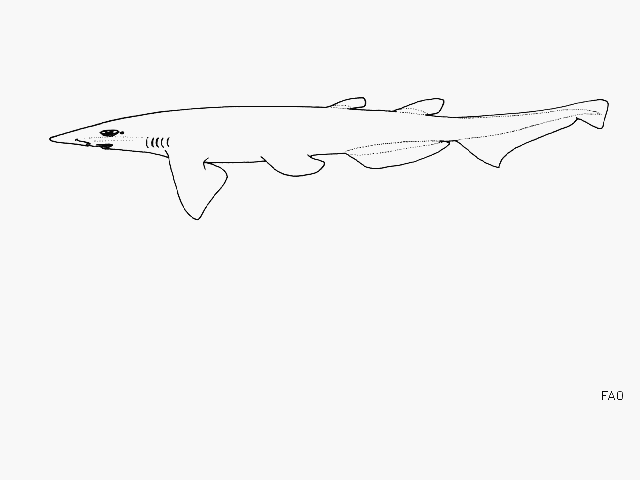| Pentanchidae (Deepwater catsharks) |
| 80 cm TL (male/unsexed); 63 cm TL (female) |
|
bathypelagic; marine; depth range - 759 m |
| Western Pacific: Philippines, South and East China seas; northward to the Suruga Bay, Japan. |
|
Dorsal spines (total): 0-0; Dorsal soft rays (total): 0-0; Anal spines: 0-0; Anal soft rays: 0-0. Diagnostic features include the very short abdomen, with interspace between pectoral and pelvic fins base shorter than 3/5 of anal fin base length; pectoral fin tip reaching beyond the midpoint between pectoral and pelvic fins; first dorsal fin smaller in area than the second dorsal; posterior end base (axil) of second dorsal clearly in front of anal fin axil; low anal fin with a long base. Egg capsule very slender; without tendrils, conical posterior end. Claspers without hooks, with posterior margin of exorhipidion forming a free lobe (Ref. 37959). Black, brown or grey (Ref. 11146), without conspicuous markings on fins (Ref. 244). |
| Found on the continental slopes. Poorly known. Oviparous, probably one egg per oviduct laid at a time. Not utilized at present. |
|
Least Concern (LC); Date assessed: 18 February 2015 Ref. (130435)
|
| harmless |
|
Collected during the Hearst Expedition 2011 done off Batangas and Mindoro, off SW Luzon (Ref. 95664). Occurrence needs further validation according to Ref. 110893. |
Source and more info: www.fishbase.org. For personal, classroom, and other internal use only. Not for publication.

